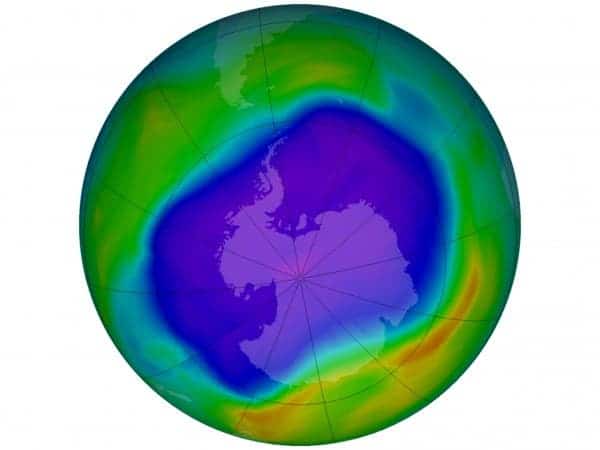
In 1985, scientists first noticed a massive “ozone hole” was seasonally appearing over Antarctica and if left unchecked the environmental consequences could grow to become nothing short of catastrophic. To mitigate this issue, the world’s governments convened and agreed in 1987 to sign the The Montreal Protocol – an international treaty designed to protect the ozone layer by phasing out the production of numerous substances that are responsible for ozone depletion. Today, almost thirty years later, despite in theory at least everybody agreed not to spew anymore ozone-depleting chemicals in the atmosphere, NASA reports significant quantities of carbon tetrachloride (CCl4) continue to be released.
Someone has a leak
CCI4 was widely used as a raw material in many industrial uses, including the production of chlorofluorocarbons (CFCs), and as a solvent. After 2007, the more than 200 signatories of the Montreal Protocol reported no new emissions of CCl4, yet the latest NASA measurements show an average of 39 kilotons are still emitted every year or about 30 percent of what peak emissions were before the substance was regulated.
“We are not supposed to be seeing this at all. It is now apparent there are either unidentified industrial leakages, large emissions from contaminated sites or unknown CCl4 sources,” said Qing Liang, an atmospheric scientist at NASA’s Goddard Space Flight Centre in Greenbelt, Maryland.
“Is there a physical CCl4 loss process we do not understand or are there emission sources that go unreported or are not identified?” Liang asked.
[ALSO READ] Four newly discovered man-made gases destroy the ozone layer
Is it maybe the case that substance stays longer in the atmosphere than thought? The NASA team used the agency’s 3-D GEOS Chemistry Climate Model and data from global networks of ground-based observations to investigate the issue and found that indeed CCI4 stays in the atmosphere 40 percent longer than previously thought. Even in these conditions, atmospheric concentrations of the compound should have declined at an expected rate of 4 per cent per year. Instead, scientists are seeing a decline rate of only one percent.
Despite ‘the law’, someone could care less.
“If you take a train with 100 tanker cars of carbon tetrachloride derailing once a month, that’s how much is being emitted,” says Paul Newman, an atmospheric chemist at NASA Goddard Space Flight Center in Greenbelt, Maryland. “That’s a lot.” The question is “Where’s this stuff coming from? We really don’t know.”
If there would actually be no ozone-depleting chemicals leaching into the atmosphere, the ozone would recover to 1980 levels by 2050.






